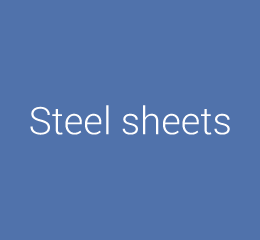
News
- Oct. 07, 2024 Nippon Steel Obtained SuMPO EPD (Formerly EcoLeaf) Certificationsfor Its Hot Extruded Steel Shapes
- Jul. 10, 2024 Long-term OCTG supply contract with Aker BP renewed –Strengthens strategic partnership through stable supply of OCTG–
- Jul. 03, 2024 Long-term OCTG supply contract with Equinor renewed –Strengthens strategic partnership through stable supply of OCTG–
- Jun. 14, 2024 Acceptance of Orders for High-Alloy Seamless OCTG and Employment of Green Steel “NSCarbolex Neutral” Finalized for CCS to Be Used in Construction Project for Blue Ammonia Manufacturing Plant in the State of Qatar
- May. 15, 2024 Adoption of Coating Cycle Extension Steel “CORSPACE” for the First Time in Overseas ODA Bridge Construction
- Apr. 23, 2024 Participation in OTC, an Energy-Related Exhibition in the U.S.
- Mar. 22, 2024 Designing Titanium TranTixxii wins the European “iF DESIGN AWARD 2024” —The world's first non-ferrous metal material to receive the award—
- Sep. 28, 2023 The Adoption of “NSCarbolex Neutral” steel product for geothermal project in the Netherlands operated by 85 Degrees Renewables.
- Mar. 11, 2022 Nippon Steel's TranTixxii and NIPPON STEEL Stainless Steel Corporation's NSSC220M featured on the roof of an international conference center in Jiangsu, China
- April 22, 2021 Nippon Steel to Launch ZAM®-EX high corrosion resistant coated steel sheets for overseas markets
- Oct. 01, 2020 Our new product "FeLuceTM" (hairline-finished electroplated steel sheet) wins the Good Design Award 2020 ~Our first steel sheet to win the Good Design Award~
- Feb. 14, 2019 NSSMC Receives Shell’s Supplier Award
- Jul. 30, 2018 Execution of Strategic Partnership with BP Oman
- Jul. 30, 2018 "The beauty of distinctive gradations make people feel nature" was posted.
- Jul. 26, 2018 VAM® 21 HT CLEANWELL® DRY ST First Running
- Jul. 19, 2018 Steel Wires Joint Venture Company for Cold Heading and Forging in USA (NSCI) holds an Opening Ceremony
- Jun. 27, 2018 NSSMC and Standard Steel Receive TTX “Excellent Supplier 2017” Award
- May. 29, 2018 NSSMC Named a Top 100 Global Innovator in 2017 for Sixth Consecutive Year
- Apr. 25, 2018 Steel Wires Joint Venture Company for Cold Heading and Forging in USA (NSCI) Starts Commercial Production
- Apr. 17, 2018 Strengthening Supply System for Ultra-high-tensile Steel Sheets New CGL to be installed at Kimitsu Works
- Feb. 27, 2018 Nippon Steel & Sumikin Crankshaft, NSSMC’s manufacturing and sales subsidiary of crankshafts in the U.S., earns Diamond Supplier Award from Navistar
- Aug. 04, 2017 NSSMC’s proprietary titanium product TranTixxii™ is adopted for cladding of a theater in Jiangsu Province, China
EZP™

Chromate-free Tinplate
Tinplate is mainly used as a material for containers such as food and beverage packaging cans, as well as general cans.The basic features required include corrosion resistance, lacquer adhesion, weldability, an attractive outer appearance and safety as a material for food containers. To date, Nippon Steel has been developing, manufacturing and supplying various types of tinplate in accordance with environmental regulations around the world. In the meantime, The EU has decided to ban the use of hexavalent chromium in the manufacturing process of tinplate (chromate treatment process) as per the REACH Regulation. In order to satisfy such strict international environmental regulations and supply requests from consumers, we have developed chromate-free tinplate called “EZP™.” As for the manufacturing process, the existing chromate treatment process will be replaced with a zirconium treatment process which forms a zirconium oxide layer that has performance equivalent to that of the conventional chromate layer.
EZP™
EZP™ is the trademark for our chromate-free tinplate, which was named after the words “feel easy” and “product,” to reflect our wish that this product will make its users “feel safe.” The green leaf in the product logo indicates that it is a safe and eco-friendly product. Recognized for its high safety as a food container material, EZP™ has been officially certified as a Food Contact Substance in the USA (FDA/FCA No.1253) and in the EU.
Features
- EZP’s manufacturing process does not use chromate treatment, while ensuring that its basic performance is equivalent to that of conventional tinplate.
- The manufacturing process can meet a variety of requirements to suit various applications (such as lacquer adhesion and sulfur resistance).
- It conforms to standards of various countries (such as the ASTM tinplate specification).
- Its manufacturable range is the same as that of conventional tinplate.
- The terms of use for users are basically unchanged.

Lacquer adhesion
Cross-cut tests(*) were performed with EZPTM and conventional tinplate before/after retort treatment.
Both samples showed no peeling of the coating.
* : Tape-peeling is performed on a baked-lacquered specimen, and then the peeled areas are evaluated.

Resistance to sulphide staining
After retorted in a 0.6% cysteine aqueous solution at 125℃ for 60 min, specimen surfaces were observed.
EZPTM and conventional tinplate showed no staining. A non-passivated specimen showed blackening.

Corrosion resistance
Uncoated cans were filled with fruits. They went through a storage test for 40 months. The elution amounts of Sn in the content syrup was measured and appearances were observed. No significant differences were found.

Catalogs

- Chromate-free Tinplate
- EZPTM
- Features
- Lacquer adhesion
- Resistance to sulphide staining
- Corrosion resistance
Contact Information
For further product information
Product Quotes, and inquiries without complete information required in inquiry form may not be responded to. Selection of inquiries for reply online is at the sole discretion of NSSMC. We appreciate your understanding.

